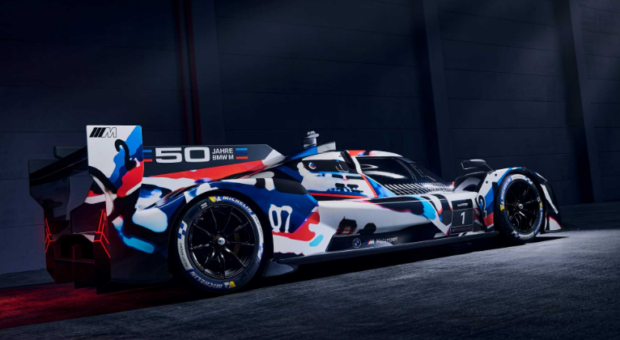
An intensive period of testing begins in a few weeks for the BMW M Hybrid V8, with which BMW M Motorsport will be battling for overall wins in 2023 in the IMSA GTP class of the WeatherTech SportsCar Championship.
The project had already reached a key milestone before the rollout: the successful fire-up of the hybrid drive system after installation in the test vehicle at the end of June. The BMW M Hybrid V8 is powered by the P66/3 eight-cylinder turbo engine with supplementary electric drive.
The combustion engine is based on the DTM unit used in the BMW M4 DTM in 2017 and 2018. During two phases of reconstruction, it underwent comprehensive adjustments to meet the stringent requirements of the LMDh hybrid drive system.
Ulrich Schulz, Head of Drivetrain Design at BMW M Motorsport, and his group had initiated an evaluation to determine which race engine would be best suited for conversion into a high-performance hybrid drive system, even before the BMW Group Board of Management had given the green light to the BMW M Motorsport entry in the LMDh category in June 2021. Time constraints and the need to consider sustainability aspects that are playing an ever more critical role in motor racing, as well as the automobile industry in general, meant that returning to the drawing board to design a completely new engine and building it at great cost was not an option. Consequently, the question was to establish which proven race engine would best meet the stringent requirements and specifications of the LMDh regulations.
The normally-aspirated P66/1 eight-cylinder engine used in the 2017 and 2018 seasons in the BMW M4 DTM was the one that got the nod. As a fully load-bearing component in the BMW M Hybrid V8, it had the advantage that it could be used in a monocoque chassis without an additional subframe and it was also the one that most closely corresponded to the regulatory requirements after conversion to a hybrid turbo engine.
The first phase saw the normally-aspirated P66/1 DTM engine converted into an intermediate engine, named P66/2, primarily by adapting two turbochargers and adjusting the crank drive. The focus was on durability, increased performance and temperature management for the engine. The P66/2 completed numerous testing units, including complete racetrack simulations, on the test bench. The next step was the creation of the P66/3 race engine, including a twin-turbo version, adjustments to the specific requirements of the Dallara chassis, final exhaust system, oil tank, cabling and integration of the high-voltage environment.
The cylinder block and cylinder heads were recast in the BMW Group foundry in Landshut (GER) and the injection system was rebuilt for direct injection. Engineers who already boasted plenty of experience with electric drive systems from the Formula E project were testing and integrating the electric motor in parallel. The unit that forms the hybrid drive system in the car consists of the e-motor, the inverter and the high-voltage battery. There is a separator clutch between the electric and combustion engines, enabling fully-electric driving – in the pit lane, for example.
Source: BMW Europe





